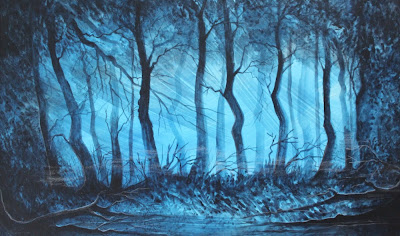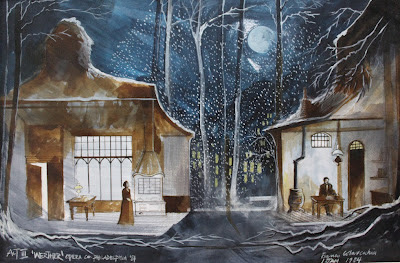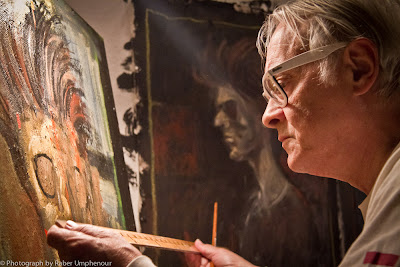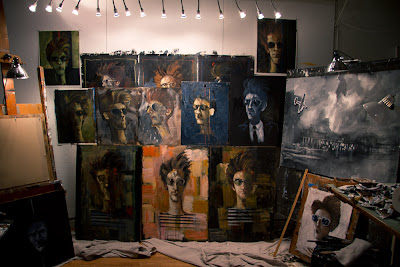 |
| Backdrop for "Toad Hall", Toronto, acrylic and gouache on paper |
 |
| Act III "Werther", Philadelphia Opera, acrylic and gouache on paper |
Franco Colavecchia has had a career spanning over fifty five years as a designer for Opera and theatre. His interest in painting led him to art school at Lincoln College of Art and St. Martins College of Art before he began pursing stage design at Wimbledon College of Art in the UK.
Franco began his career back stage as part of the crew and moved quickly to becoming a designer for American national opera houses and a highly sought university instructor. Throughout his teaching and designing, Franco painted portraits, interiors and scenes from his life as much as he could. Even now, in his 70's Franco says he is still learning so much as a painter.
Many of his pieces for theatre were painted in acrylics, inks and gouache as those dry quickly for fast rendering. For the portraits he does currently, however, Franco leans towards the water soluble oils, which lend themselves well to oil painting techniques without the fuss of solvents. Franco's style is to draw with the paint, so there is not much underpainting. . . He just dives into the figure. This also means that his primary tool, the brush, becomes his drawing tool as well as his painting tool.
 |
| Franco at work in his Providence Studio, 2012, photography by Raber Umphenhour |
There are hundreds of brushes in all shapes and sizes in Franco's studio loft-- large bristle brushes and round sables, fan brushes for hair and small brights for details. He keeps a large polyester brush on hand for priming surfaces or laying in backgrounds, and keeps all brushes beyond the normal wear and tear. He has had some brushes since the 70's, taking care to
wash them regularly, several times during a painting session, actually
with water and mild soap. "Sometimes those stiff bristle brushes that are worn down do well for painting hair, sometimes even an old toothbrush will work," says Franco. He knows that every brush has its place in a studio, new ones for fine work and older ones for underpainting or rough textures.
 |
| Franco's most current portrait series, photography by Raber Umphenhour |
For painting portraits, he likes to use small brights, angulars, and
flats as they create the shadows and face shapes in his signature style. These brushes tend to be either synthetic or sable as it is important they hold their shape and keep their sharp edge to give the detail and line that Franco needs in his work. He chooses his brushes visually, by the length of the handle primarily, to give him the distance he needs from his work. Stepping back from a large painting is a necessity to get the perspective he wants. Franco believes in purchasing quality brushes handfuls at a time; he keeps his studio well stocked so that he always has what he needs on hand. Even though Franco's work calls for specific brushes at certain times, he isn't afraid to try something new in his work and allow the tools to lead the way.
To see more of Franco's work or to keep up with the archiving of his renderings, you can "like" him on Facebook:
Colavecchia Studios or
MOSDO: The Museu of Scenographic Design Online
Keep Painting,
Karyn




Comments
Post a Comment